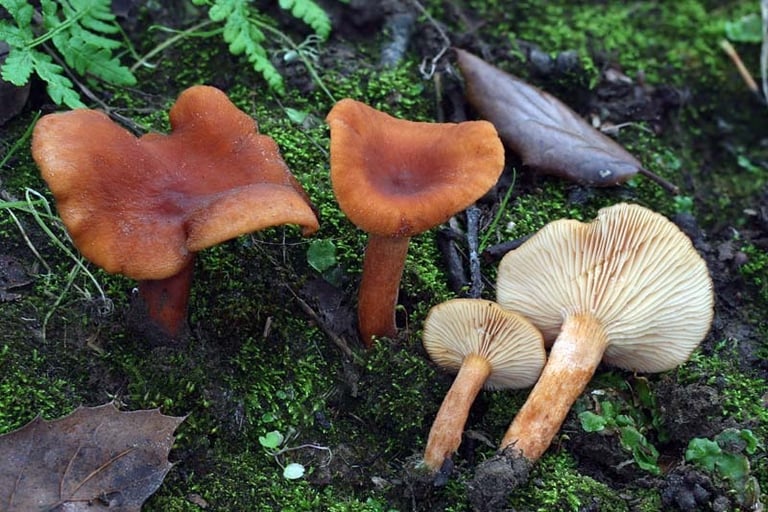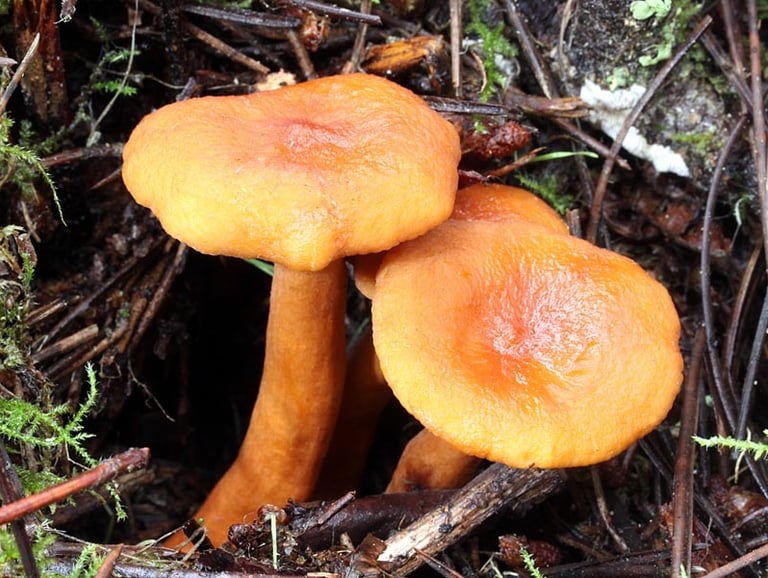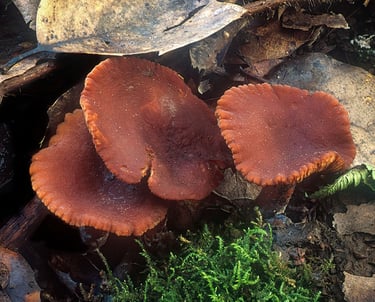Lactarius Fragilis




Image by Michael Wood
Image by Michael Wood
Hygrophoropsis aurantiaca, also known as the false chanterelle, is a mushroom species that is found in North America and Europe.
Description
1. Cap: The cap of Lactarius fragilis is usually between 1-5 cm in diameter and can be a pale, creamy color, pinkish-brown, or grayish-brown. It is usually convex or flattened, and may have a slightly velvety texture. The cap can also have small, depressed areas or concentric circles.
2. Gills: The gills of Lactarius fragilis are usually cream-colored and are decurrent, which means they extend down the stem. When cut or bruised, the gills may release a white or slightly pinkish latex.
3. Stem: The stem of Lactarius fragilis is usually the same color as the cap or slightly lighter, and can be between 2-5 cm tall and 0.2-0.5 cm wide. It is usually fragile and easily broken, which is where it gets its common name.
4. Spore print: The spore print of Lactarius fragilis is usually white.
5. Habitat: Lactarius fragilis is usually found in mixed deciduous-coniferous forests, often growing under beech or oak trees. It grows in a mycorrhizal association with trees.
6. Lookalikes: Some potential lookalikes of Lactarius fragilis include other small, fragile Lactarius species, such as Lactarius vellereus, which has a slightly darker cap and stem and usually grows in coniferous forests. Another potential lookalike is the pinkish-brown Russula species, which lack the milky latex and usually have brittle caps that are easily broken. As with all mushroom identification, it is important to use multiple identifying factors to confirm the identity of a species.









